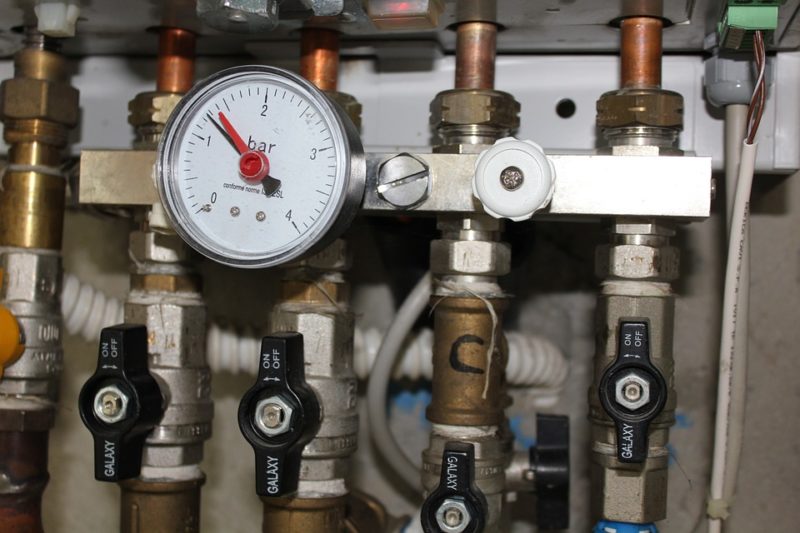Why my water heater is not working? It’s because of problems like damaged or loose in-line valve, broken pressure relief valve, warm water not present, low hot water supply, low pressure in the water, too cold or too warm water, discolored water, and a long time required producing warm water.
Remember that a water heater is not the same as washing machines and dishwashers. It is utilized regularly. The water heater provides warm water to handle daily tasks like showering, washing dishes, washing hands, and laundry.
Since this device is used regularly, it is common to face these issues. The good thing is the tank-style water heater is backed by the design and engineering of a minimal amount of parts. Repair the problem in the water heater with no professional by your side. There is much more to learn, so it’s best to dig into this article further!
Reasons Why The Water Heater Is Not Working
Below are the reasons why the water heater is not working.
#1. Damaged or loose valve in the line
The water leaks above the system, but you can quickly fix it, as this is better than if water drips underneath the water tank. The leading cause of water leakage inside the tank is a loose in-line valve. This handle you see above the water tank activates or deactivates water flow and fixes this issue by the nut securing the valve or ball in its place. A more severe leak occurs if it is tightened. Travel to the nearest hardware store to purchase a water heater valve in the line.
#2. Warm water not present
The damaged heating element is the common cause of warm water lacking in your water heater. The device features two heating elements to handle the heating of incoming water inside the tank. If the heating element starts to function poorly, little to no hot water can be used for cleaning, showering, and laundry. Moreover, many problems can stop the warm water from producing in the gas water type of heater.
In this sense, the problem occurs because of a poorly-malfunctioning gas valve or a blown-out pilot light. Lacking hot water is also due to a damaged thermocouple. Purchase new components instead to replace the old components easily. Purchase additional parts or contact a reliable plumber if the device does not work correctly. This way, you get the water heater repaired.
#3. Too cold or too warm water
Adjust the water temperature as you change the thermostat settings, as this is true if the water inside the shower is cold or hot. Set the temperature to 120 degrees Fahrenheit to save more on the utility bills, as this is a suitable temperature to set to avoid skin irritation or scalding. A freezing temperature requires adjusting the thermostat to 140 degrees Fahrenheit, making the shower even more pleasant. A water heater that does not work correctly upon changing the temperature is a sign of a damaged thermostat. Look for a reliable heating or plumbing contractor in the area to replace or repair the thermostat.
#4. Discolored water
Make sure the water from the sink is clear, as this is a sign that the water tank deteriorates clearly. Or, the anode rod in a water heater declines, too. You can fix the issue provided you detect it early on. Call a plumber if the device does not work correctly. One will readily perform tune-ups or repairs. A licensed plumbing individual can easily replace and remove the system’s anode rod. The rust that spreads on the water tank’s interior results in small cracks forming, as this causes water leakage onto the house furniture and flooring. The majority of water tank-type leaks are not repairable. Better yet, purchase a new system accommodating issues further. Save money as you report the early corrosion signs to an expert.
#5. Low hot water supply
Why my water heater is not working is also due to low hot water supply, as one reason why you often run out of warm water, as this is the result of a cracked or damaged dip tube. The tube pushes cold water underneath the heated water tank. With the hole or crack that starts to create in the dip tube, the cold water supply then releases after the middle or top of the tank. Coldwater above the tank goes to house showers and faucets, solving the problem of replacing the system’s dip tube. Nonetheless, contacting a reputable technician helps push the process to install a complex and new dip tube.
A low, warm water supply is a sign of sediment building up in excess in the water tank. And, the water heater reaches the middle of a life cycle which results in minerals, like calcium and magnesium, accumulating at the water tank’s foundation. Then, the minerals grow but with less room inside the water tank that stores hot water. So, fix this issue as you flush the water heater and eliminate excess minerals. It may also be a good idea to read about the water heater checklist.
It’s A Wrap!
Now you learn the answer to the question, “why my water heater is not working?” It is attributed to many issues like low hot water supply, too cold or warm water, warm water not present, damaged or loosen the valve in the line, and discolored water. So, you also know what to do to fix the water heater and call the help of a professional. You may want to read related articles; know how much energy does a water heater use and where to take an old water heater.

